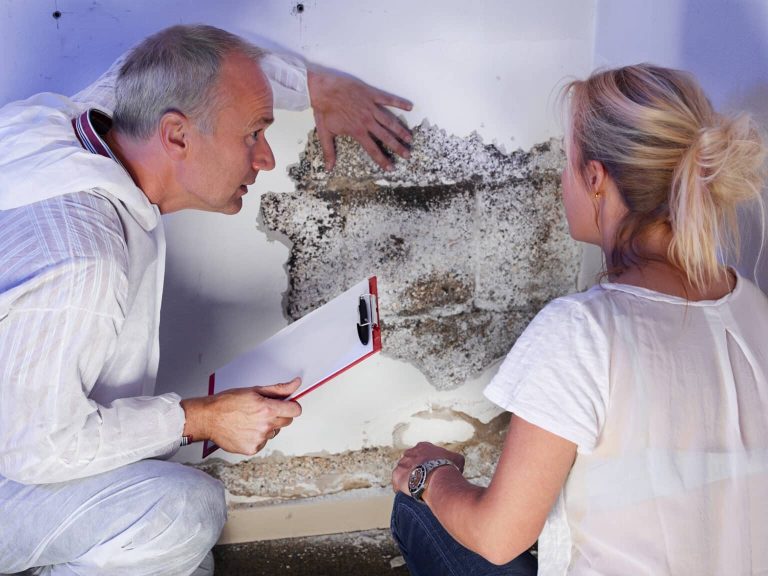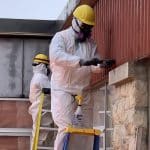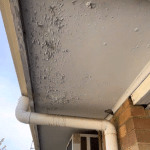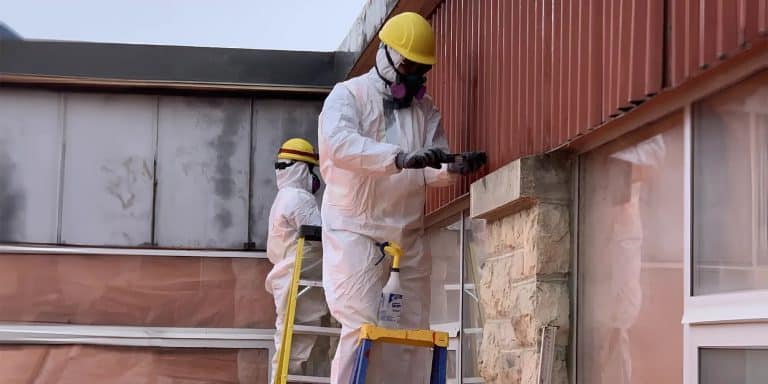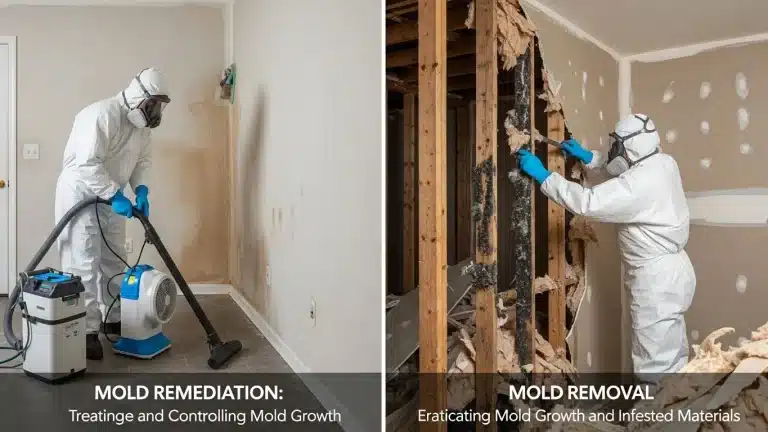Asbestos, once a popular construction material, is now recognized as a severe health hazard. However, several misconceptions surround asbestos services, leading to potential risks and misunderstandings. In this article, we’ll debunk common misconceptions to ensure a better understanding of asbestos management.
MISCONCEPTIONS ABOUT ASBESTOS
Common Misconception: Age Determines Asbestos Presence-MISCONCEPTIONS ABOUT ASBESTOS
1. Age Alone Doesn’t Guarantee Safety
Age has often been misconstrued as the sole determinant of asbestos presence in buildings. While it’s true that older structures are more likely to contain asbestos due to its widespread use until the 1980s, newer constructions aren’t exempt. Asbestos was prevalent in various building materials, including insulation, flooring, and roofing, meaning even recently built properties may harbor asbestos-containing materials (ACMs). Therefore, assuming safety based solely on a building’s age can be misleading and potentially hazardous.
2. Importance of Comprehensive Assessment
Relying solely on the age of a building overlooks the need for thorough asbestos assessment. Visual inspection alone isn’t sufficient to determine asbestos presence, as ACMs may be concealed within walls, ceilings, or other inaccessible areas. Professional asbestos testing is crucial for accurate identification, involving sample collection and laboratory analysis to confirm the presence and extent of asbestos. By conducting comprehensive assessments, property owners can make informed decisions regarding asbestos management and safeguard occupants’ health.
3. Proactive Approach to Risk Mitigation
Rather than banking on assumptions based on a building’s age, adopting a proactive approach to asbestos risk mitigation is paramount. Property owners should prioritize regular asbestos inspections, regardless of a building’s age, to detect and address potential hazards promptly. Implementing proactive asbestos management strategies, such as periodic monitoring and maintenance, helps prevent exposure risks and ensures compliance with regulatory requirements. By staying vigilant and proactive, property owners can effectively manage asbestos risks and create safer environments for occupants.
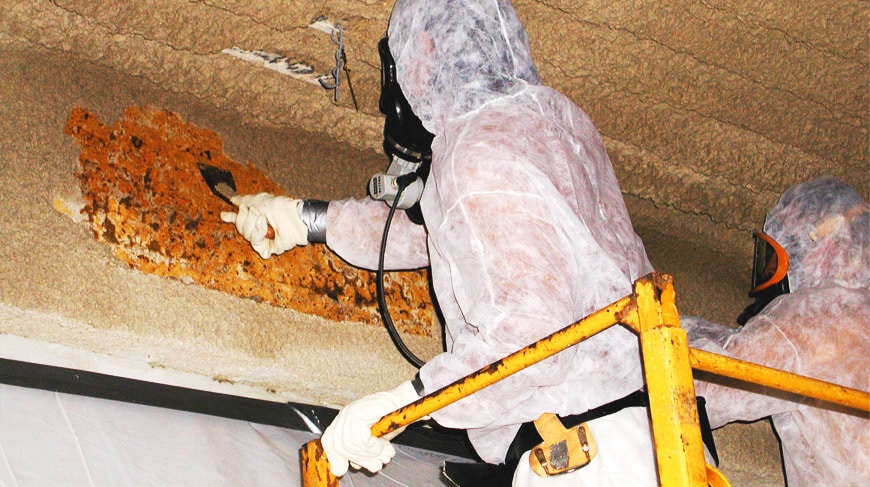
Misconception: Visual Assessment Suffices
1. Limited Scope of Visual Assessment
Visual inspections, while valuable, have limitations in detecting asbestos-containing materials (ACMs). Asbestos fibers are often embedded within building materials, making them invisible to the naked eye. Consequently, relying solely on visual assessment may overlook hidden ACMs, leading to inaccurate conclusions about asbestos presence.
2. Need for Professional Expertise
Professional expertise is essential for accurate asbestos assessment. Qualified inspectors have the necessary training and experience to identify potential ACMs and assess their condition accurately. They use specialized equipment and techniques to conduct thorough inspections, including sampling and laboratory analysis, to confirm asbestos presence conclusively.
3. Importance of Comprehensive Testing
Comprehensive testing, including visual assessment and laboratory analysis, is crucial for reliable asbestos detection. While visual inspections provide initial insights, laboratory testing is necessary to confirm asbestos presence definitively. This multi-step approach ensures thoroughness and accuracy in identifying ACMs, enabling property owners to make informed decisions regarding asbestos management.
4. Proactive Risk Mitigation
Adopting a proactive approach to asbestos risk mitigation is essential for safeguarding occupants’ health and complying with regulations. Property owners should prioritize professional asbestos testing to identify and address potential hazards promptly. By investing in comprehensive testing and professional expertise, property owners can mitigate asbestos risks effectively and create safer environments for occupants.
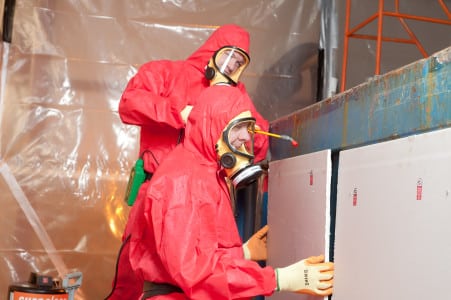
DIY Asbestos Removal Misconception
1. Underestimation of Risks
Many individuals underestimate the health risks associated with DIY asbestos removal. Without proper training and equipment, DIY enthusiasts may unknowingly expose themselves and others to hazardous asbestos fibers. Moreover, improper removal techniques can release asbestos particles into the air, increasing the risk of inhalation and long-term health complications.
2. Legal and Regulatory Compliance
DIY asbestos removal often overlooks legal and regulatory requirements governing asbestos handling and disposal. In many jurisdictions, DIY removal is strictly prohibited due to the potential health and environmental hazards it poses. Failure to comply with these regulations can result in severe penalties and legal consequences for property owners.
3. Lack of Expertise and Safety Measures
DIY enthusiasts typically lack the expertise and safety measures necessary for safe asbestos removal. Professional asbestos abatement contractors undergo extensive training and certification to safely handle asbestos-containing materials (ACMs). They use specialized equipment and follow strict safety protocols to minimize exposure risks and ensure proper containment and disposal of ACMs.
4. Potential Health Hazards
Engaging in DIY asbestos removal without proper precautions can expose individuals to significant health hazards. Inhalation of airborne asbestos fibers can lead to serious respiratory conditions such as asbestosis, lung cancer, and mesothelioma. Additionally, DIY removal may disturb asbestos-containing materials, increasing the risk of fiber release and contamination of the surrounding area.
5. Long-Term Costs and Consequences
Attempting DIY asbestos removal may seem cost-effective initially, but it can result in long-term financial and legal consequences. Improper removal techniques can exacerbate asbestos contamination, leading to costly cleanup efforts and potential litigation. Moreover, DIY removal may void insurance coverage and negatively impact property resale value due to unresolved asbestos issues.

Asbestos Abatement Misconception
1. Limited Understanding of Abatement Procedures
Many individuals hold the misconception that asbestos abatement simply involves removing asbestos-containing materials (ACMs) from a property. However, asbestos abatement encompasses a range of procedures beyond removal, including encapsulation, enclosure, and repair. Without a comprehensive understanding of these techniques, property owners may fail to address asbestos hazards effectively.
2. Overreliance on DIY Solutions
Some property owners mistakenly believe that they can perform asbestos abatement themselves using DIY methods. However, asbestos abatement is a highly specialized process that requires professional expertise and equipment. Attempting DIY abatement without proper training and certification can result in inadequate removal, incomplete containment, and increased health risks for occupants.
3. Underestimation of Health Risks
Another common misconception is underestimating the health risks associated with asbestos exposure during abatement activities. Improper abatement procedures can release asbestos fibers into the air, increasing the risk of inhalation and subsequent health complications such as lung cancer, mesothelioma, and asbestosis. Property owners must recognize the importance of hiring qualified asbestos abatement professionals to mitigate these risks effectively.
4. Failure to Address Hidden Asbestos
Many property owners assume that visible asbestos-containing materials are the only concern during abatement. However, asbestos may also be present in hidden areas such as insulation, flooring, and HVAC systems. Neglecting to identify and address these hidden sources of asbestos can lead to incomplete abatement and ongoing health hazards for occupants.
5. Neglecting Regulatory Compliance
Some property owners overlook the importance of regulatory compliance when planning asbestos abatement projects. Federal, state, and local regulations govern asbestos handling, removal, and disposal to protect public health and the environment. Failure to adhere to these regulations can result in fines, legal liabilities, and delays in project completion. Property owners must prioritize compliance with relevant laws and guidelines to ensure safe and effective asbestos abatement.

Passive Asbestos Management Misconception
1. Lack of Proactive Approach
One common misconception surrounding asbestos management is the belief that passive measures are sufficient to address asbestos hazards. Some property owners adopt a passive approach, assuming that as long as asbestos-containing materials (ACMs) are intact and undisturbed, they pose no risk. However, this mindset neglects the potential for ACMs to deteriorate over time or become disturbed during renovations or maintenance activities, leading to asbestos exposure.
2. Underestimation of ACM Degradation
Another misconception is underestimating the risk of ACM degradation over time. While intact ACMs may pose minimal risk, they can deteriorate due to factors such as aging, water damage, or physical wear and tear. Asbestos fibers may become friable, meaning they can easily crumble and release into the air, posing a significant health hazard to occupants. Ignoring the potential for ACM degradation can result in increased exposure risks and health complications.
3. Failure to Implement Monitoring Measures
Some property owners mistakenly believe that once ACMs are identified and managed passively, no further action is necessary. However, effective asbestos management requires ongoing monitoring and assessment to ensure the continued integrity of ACMs and the safety of building occupants. Without regular inspections and monitoring measures, property owners may overlook changes in ACM condition or fail to identify emerging risks, leaving occupants vulnerable to asbestos exposure.
4. Lack of Contingency Planning
Passive asbestos management often lacks contingency planning for potential ACM disturbances or emergencies. Property owners may fail to develop response protocols or mitigation strategies in the event of ACM damage, renovations, or natural disasters. Without proper contingency planning, property owners may face delays, disruptions, and increased health risks during emergency situations involving ACMs.
5. Neglecting Educating Occupants
A crucial aspect of effective asbestos management is educating building occupants about the presence of ACMs and proper safety protocols. However, some property owners overlook the importance of communication and education, assuming that passive management measures alone are sufficient to mitigate risks. Failing to inform occupants about the presence of ACMs, their location, and safety precautions can lead to misunderstandings, improper behavior, and increased exposure risks. Property owners must prioritize educating occupants about asbestos hazards and proper safety practices to minimize risks effectively.
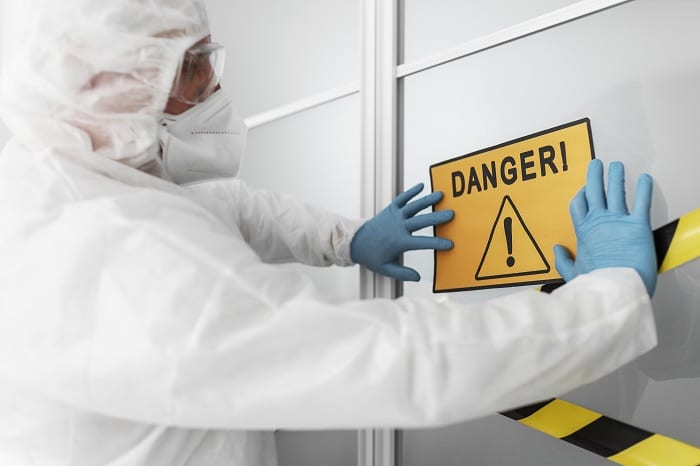
Conclusion
In conclusion, addressing misconceptions about asbestos management is crucial for promoting safety and protecting public health. At Rocky Demolition Asbestos Removal, we understand the importance of debunking myths and educating property owners about the realities of asbestos hazards. By dispelling misconceptions such as the belief that passive management is sufficient or that visual assessments are adequate, we empower our clients to take proactive measures in managing asbestos risks.
Our company is committed to providing comprehensive asbestos services that prioritize safety, compliance, and effectiveness. We recognize the importance of proactive asbestos management strategies, including regular monitoring, proper abatement procedures, and contingency planning. By adopting a proactive approach and staying informed about asbestos regulations and best practices, property owners can effectively mitigate risks and ensure the well-being of building occupants.
Through education and awareness initiatives, Rocky Demolition and Asbestos Removal strive to equip our clients with the knowledge and resources needed to make informed decisions about asbestos management. By fostering open communication and transparency, we empower property owners to take proactive steps in safeguarding their buildings and occupants from asbestos hazards.
In conclusion, debunking misconceptions and promoting proactive asbestos management practices are essential steps in ensuring the safety and well-being of individuals and communities. At Rocky Demolition and Asbestos Removal, we are dedicated to providing reliable asbestos services and fostering a culture of safety and compliance in every project we undertake. Together, we can create safer environments and protect future generations from the risks of asbestos exposure.
Rocky Demolition and Asbestos Removal
At Rocky Demolition and Asbestos Removal, we prioritize safety and compliance with industry standards in all our services. As part of our commitment to transparency and providing valuable resources to our clients, we recommend referring to the guidelines set by the City of Vancouver’s Building and Development Services department for information on demolition permits and regulations.City of Vancouver’s

